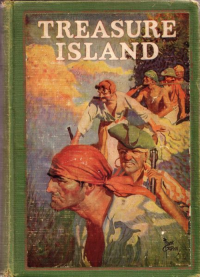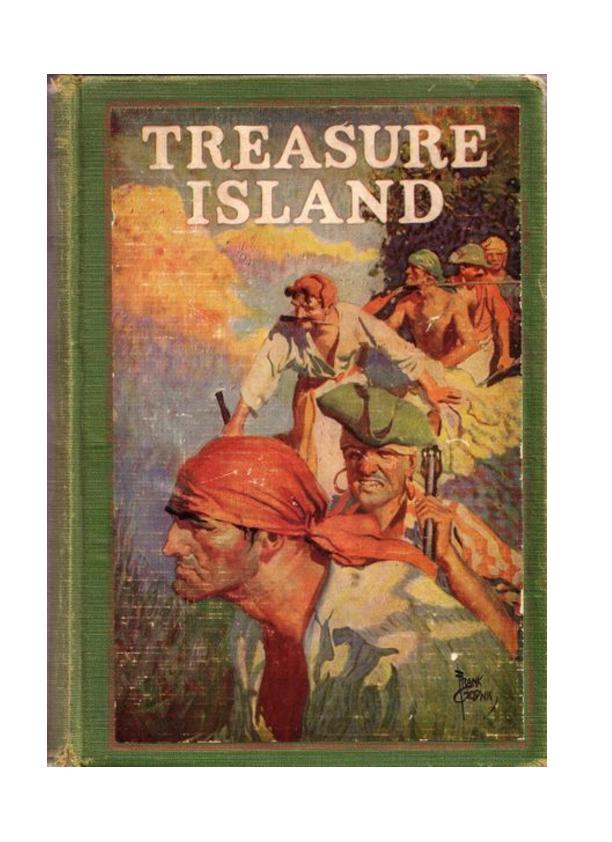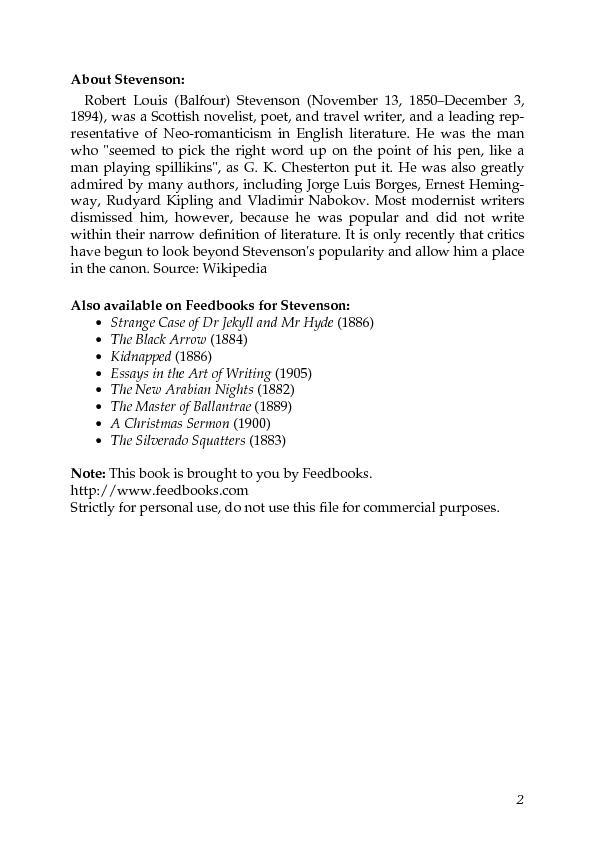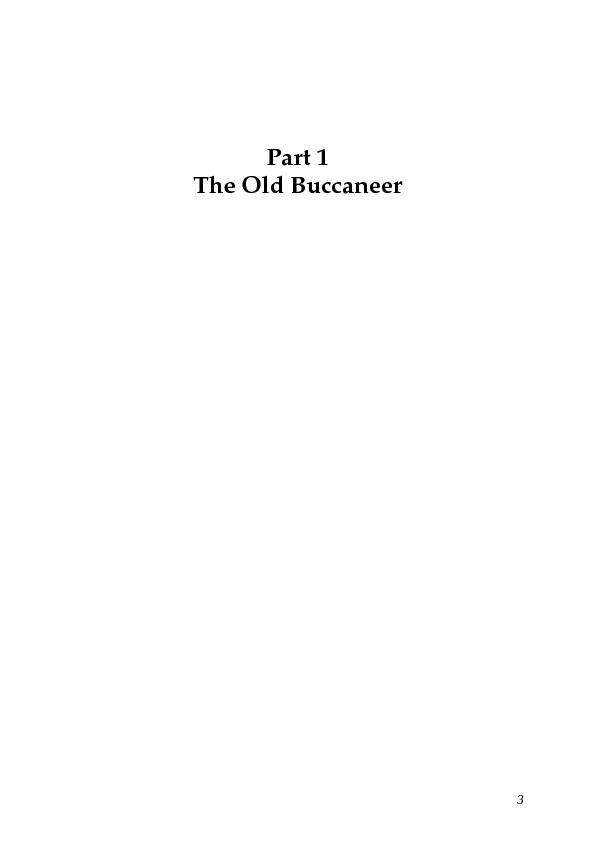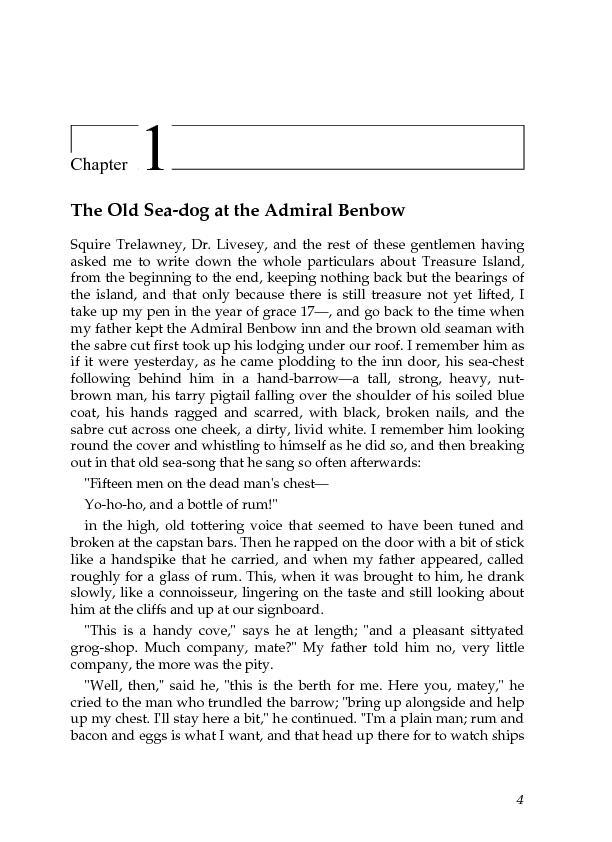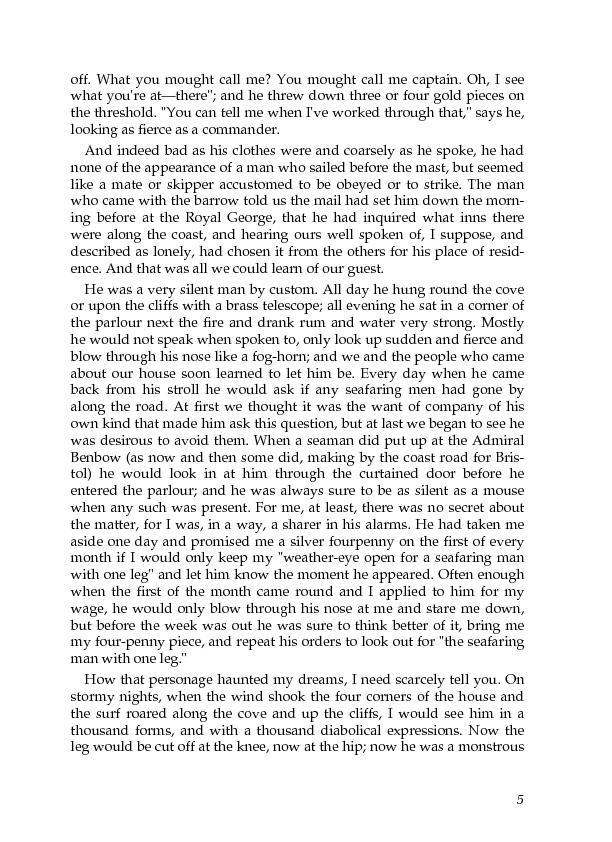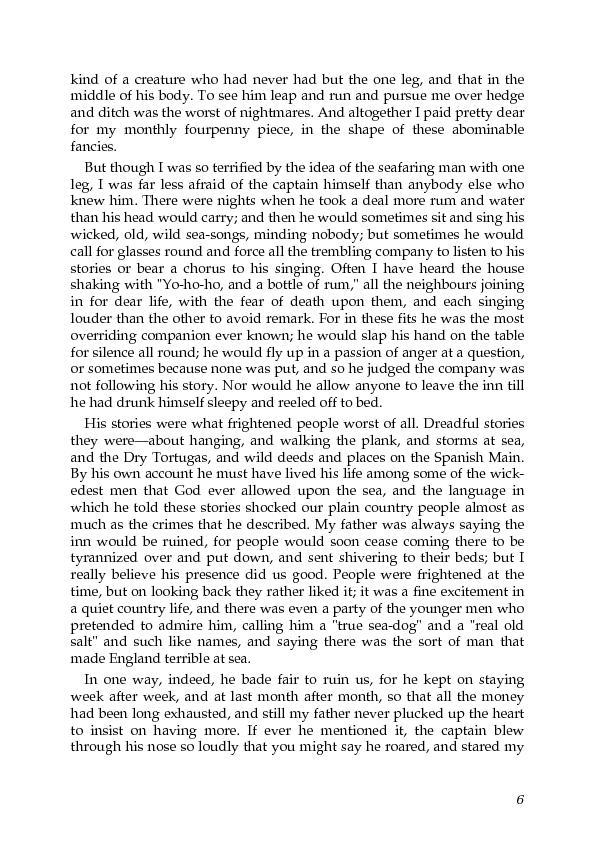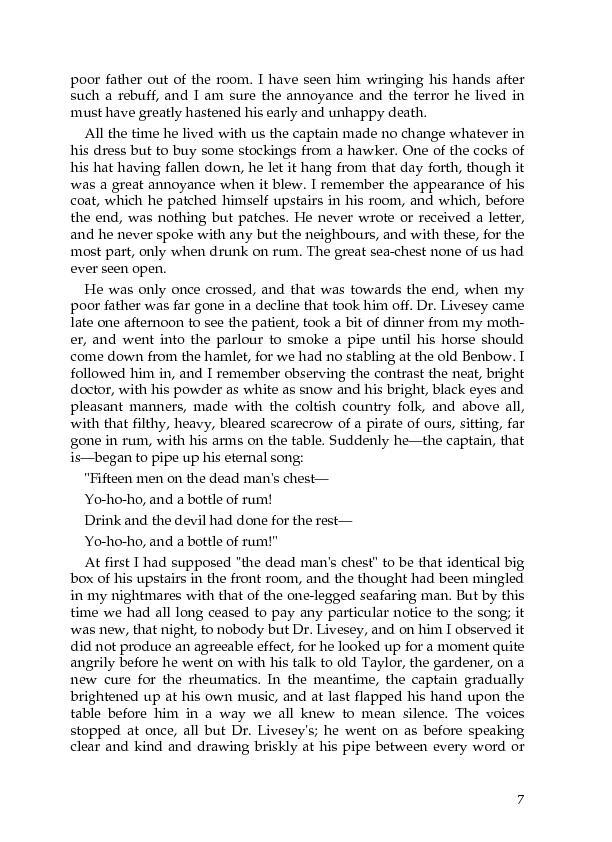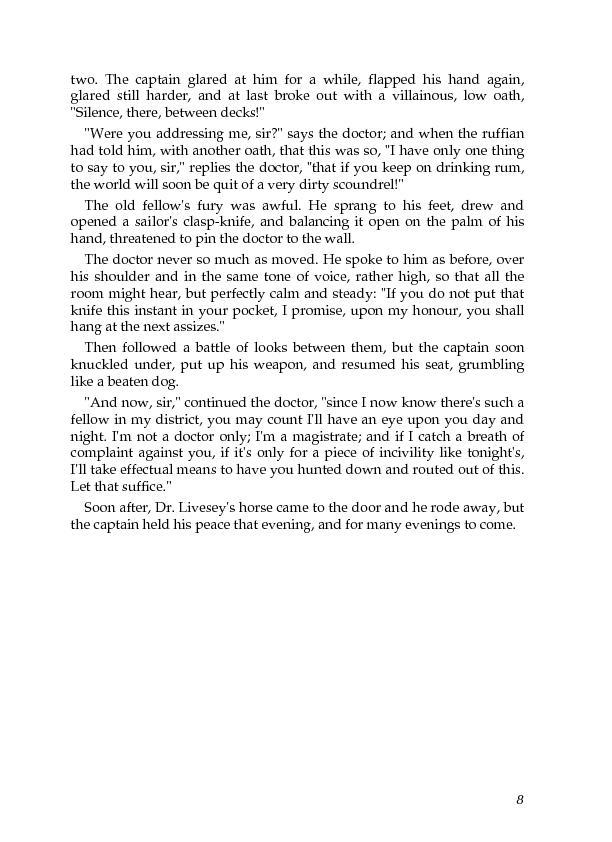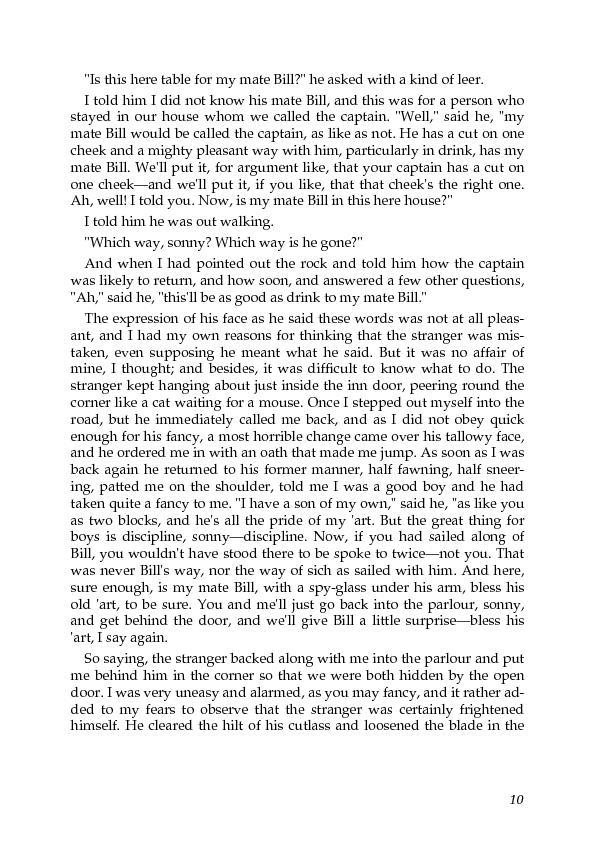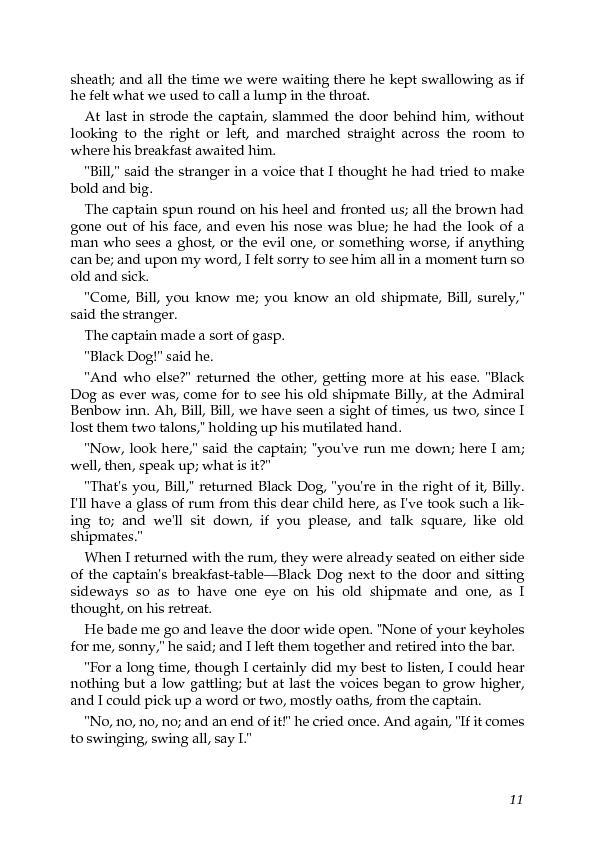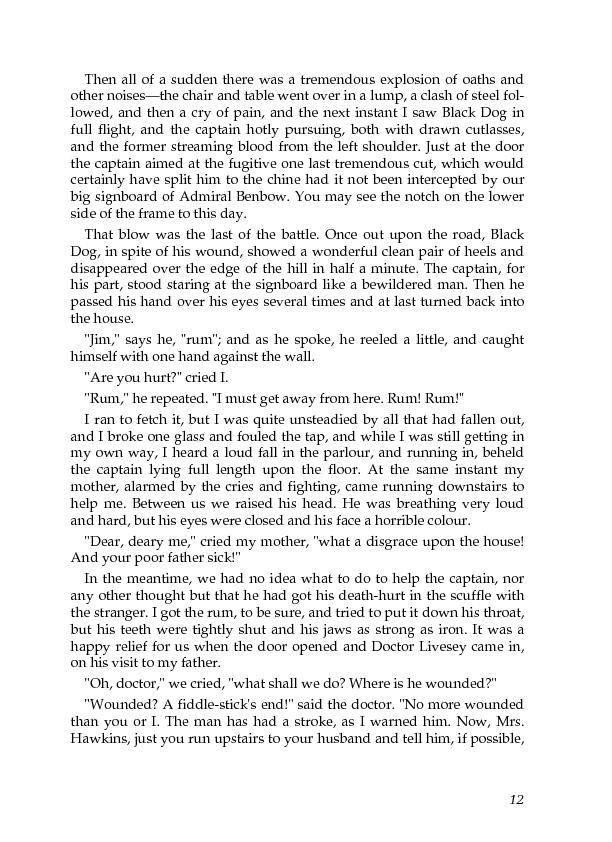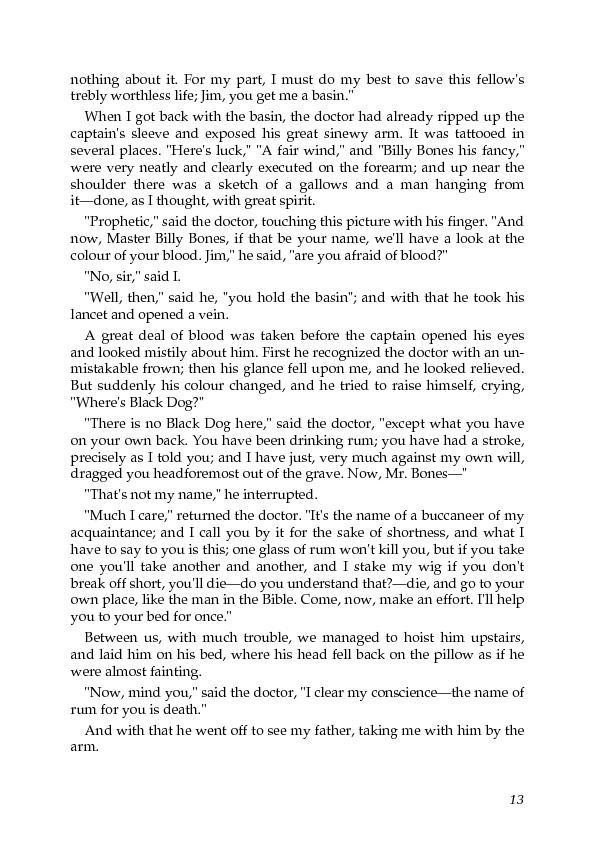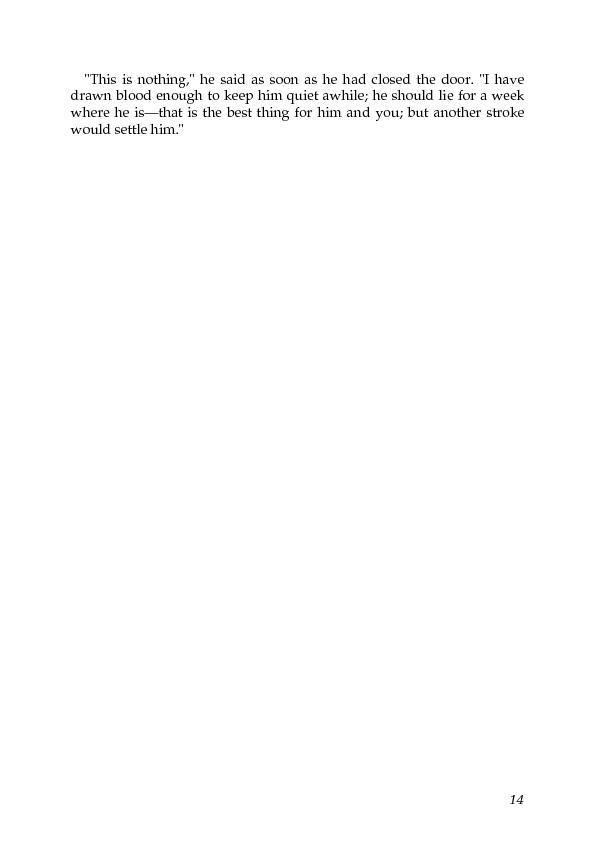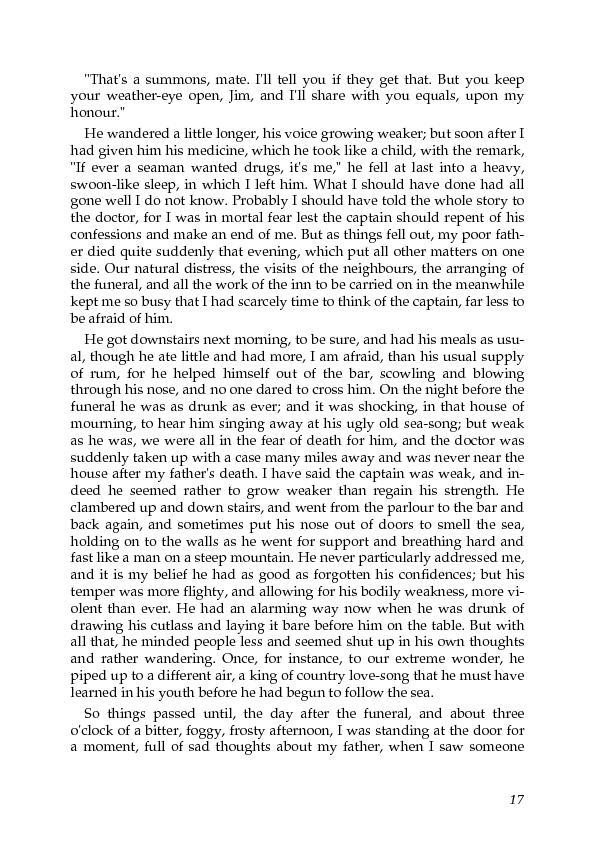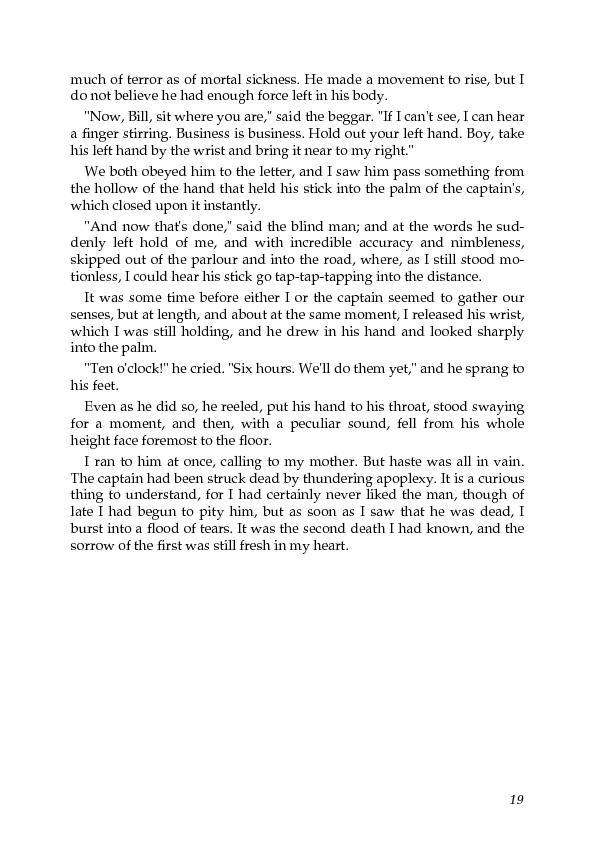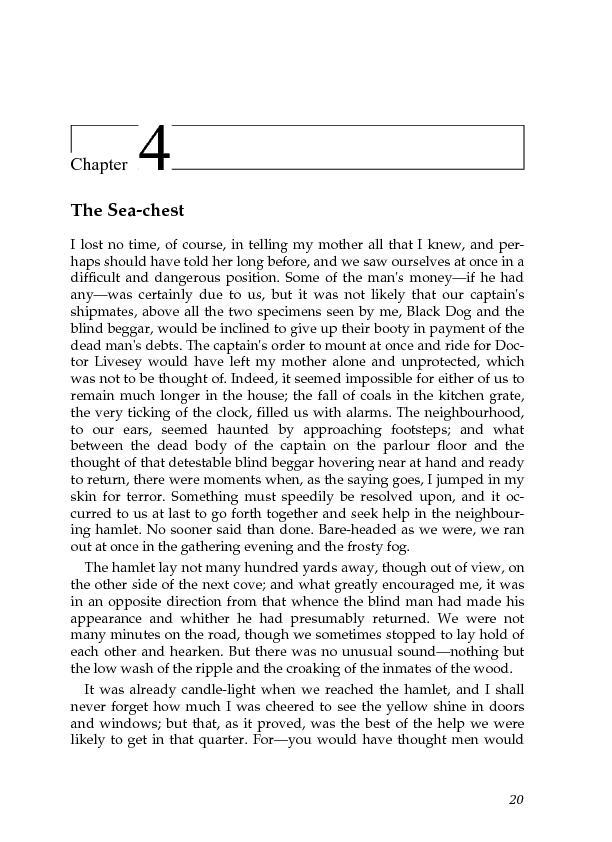Treasure Island
Treasure Island
By: Robert Louis Stevenson
While going through the possessions of a deceased guest who owed them money, the mistress of the inn and her son find a treasure map that leads to a pirate fortune as well as great danger.
Title information
Treasure Island is considered one of the first adventure stories written specifically for adolescents without an obvious emphasis on teaching morals. This is not to say that Robert Louis Stevenson’s novel about a young boy is without lessons but rather that its emphasis is a coming-of-age story filled with challenges, fears, and triumphs like any exciting and fun-filled journey of exploration. The lessons are learned through the characters’ decisions and mistakes, which makes them more lifelike and less didactic. Stevenson has stated that the story was inspired by a detailed map he drew from his imagination. This map, Stevenson wrote in an essay called “Treasure Island,” “was elaborately and (I thought) beautifully coloured; the shape of it took my fancy beyond expression; it contained harbours that pleased me like sonnets; and with the unconsciousness of the predestined, I ticketed my performance ‘Treasure Island.’” The more Stevenson studied this map of his creation, the more his imagination expanded. First, he could see the vegetation of the island. Then the island became peopled in his mind’s eye, and their stories began to appear. “It was to be a story for boys,” Stevenson wrote; and with excitement and ease, he produced the first fifteen chapters in as many days. But then the inspiration disappeared—the author claims that he was at a very low point in his life at this time. He was thirty-one and had yet to make a salary on his own. He was supported by his father, and he wanted to write something that not only would make money but would please his father. Much of his writing up to this point Stevenson referred to as a failure; he was afraid that this current story he was working on would become one too. Stevenson took a break from his work and went on a short vacation. Upon arriving at his destination, he sat down at a desk, determined to free himself from his despair. With great discipline, he started writing again. “And in a second tide of delighted industry,” Stevenson wrote, “I finished ‘Treasure Island.’” The book turned out to be a huge success for Stevenson, bringing both money and fame. It was published first as a magazine serial before being produced as a book in 1883. But that is not the end of the story. When Stevenson sent his manuscript to his publisher, the map, which had inspired the pirate story, was missing. It was never found. Stevenson had to create another map, “but somehow it was never ‘Treasure Island’ to me,” Stevenson wrote.
Robert Louis Stevenson
Robert Louis Balfour Stevenson (13 November 1850 – 3 December 1894) was a Scottish novelist, poet, essayist and travel writer. Stevenson has been greatly admired by many authors, including Jorge Luis Borges, Ernest Hemingway, Rudyard Kipling, Marcel Schwob, Vladimir Nabokov, J. M. Barrie, and G. K. Chesterton, who said of him that he "seemed to pick the right word up on the point of his pen, like a man playing spillikins".
In late 1873, on a visit to a cousin in England, Stevenson made two new friendships that were to be of great importance to him, Sidney Colvin and Fanny (Frances Jane) Sitwell. Sitwell was a woman of thirty four, with a young son, separated from her husband. She attracted the devotion of many who met her, including Colvin, who eventually married her in 1901. Stevenson was another of those drawn to her, and over several years they kept up a heated correspondence, in which Stevenson wavered between the role of a suitor and a son (he came to address her as "Madonna"). Colvin became Stevenson's literary adviser, and after his death was the first editor of his letters. Soon after their first meeting he had placed Stevenson's first paid contribution, an essay, "Roads", in The Portfolio. Stevenson was soon active in London literary life, becoming acquainted with many of the writers of the time, including Andrew Lang, Edmund Gosse, and Leslie Stephen, the editor of the Cornhill Magazine, who took an interest in Stevenson's work. Stephen in turn would introduce him to a more important friend: visiting Edinburgh in 1875, he took Stevenson with him to visit a patient at the Edinburgh Infirmary, William Henley. Henley, an energetic and talkative man with a wooden leg, became a close friend and occasional literary collaborator for many years, until in 1888 a quarrel broke up the friendship. He is often seen as providing a partial model for the character of Long John Silver in Treasure Island.
In November 1873, Stevenson had a physical collapse and was sent for his health to Menton on the French Riviera. He returned in better health in April 1874, and settled down to his studies, but he would often return to France in the coming years. He made long and frequent trips to the neighbourhood of the Forest of Fontainebleau, staying at Barbizon, Grez-sur-Loing and Nemours, becoming a member of the artists' colonies there, as well as to Paris to visit galleries and the theatres. He did qualify for the Scottish bar in July 1875; and his father added a brass plate with "R. L. Stevenson, Advocate" to the Heriot Row house. But although his law studies would influence his books, he never practised law. All his energies were now in travel and writing. One of his journeys, a canoe voyage in Belgium and France with Sir Walter Simpson, a friend from the Speculative Society and frequent travel companion, was the basis of his first real book, An Inland Voyage (1878).


